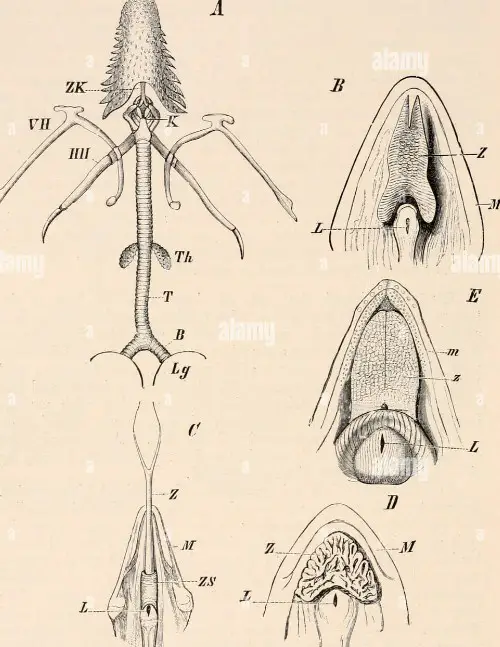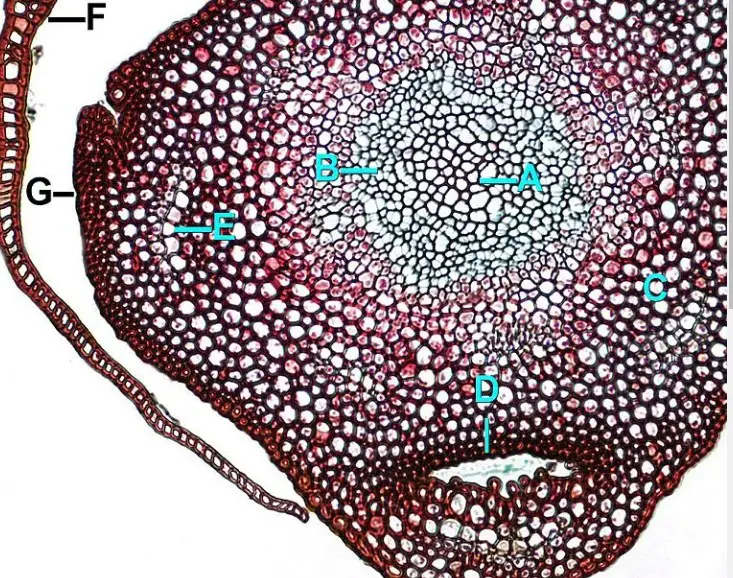Bryophytes, the group of non-vascular plants including mosses, liverworts, and hornworts, present a fascinating study of life at the intersection of aquatic and terrestrial ecosystems. These primitive plants have adapted to a variety of environments, evolving specific cellular structures to survive without conventional vascular systems. Among these, hydroids and leptoids play crucial roles, functioning as the unsung heroes in water and nutrient transportation within these plants.
The difference between hydroids and leptoids lies primarily in their function and structure. Hydroids are water-conducting cells found in the mosses, resembling the xylem of higher plants, whereas leptoids are responsible for conducting nutrients, similar to the phloem in vascular plants. Despite their lack of lignification and complex structures, these cells are vital for the survival of bryophytes in their respective habitats.
Diving deeper into the anatomy of bryophytes reveals a world where simplicity and efficiency coexist. Hydroids and leptoids, though lacking the complexity of vascular tissues, highlight the evolutionary ingenuity of plants. Their presence not only facilitates basic life processes within bryophytes but also illustrates the adaptive strategies these plants employ to thrive across diverse and sometimes challenging environments.

Plant Anatomy Basics
Bryophyte Overview
Definition and Significance
Bryophytes are a fascinating group of non-vascular plants that mark an important stage in plant evolution. These plants include mosses, liverworts, and hornworts. Their significance lies in their position as some of the earliest land plants, providing insights into plant adaptation and evolution.
Common Characteristics
Bryophytes share several key features:
- They do not have vascular tissue (xylem and phloem) for water and nutrient transport.
- They rely on osmosis and diffusion for movement of substances.
- Gametophyte is the dominant phase of their life cycle, which is unique among plant groups.
Cell Types and Functions
Plant Cell Diversity
Plant cells are diverse, each type tailored to specific functions essential for the plant’s growth, development, and survival. From photosynthetic cells in leaves to water-conducting cells in stems, this diversity underpins plant health and ecosystem balance.
Role in Plant Health and Growth
Cell types such as parenchyma, collenchyma, and sclerenchyma serve structural and metabolic functions, whereas specialized cells like hydroids and leptoids in bryophytes play critical roles in fluid and nutrient movement.
Hydroids
Definition and Role
Hydroids are water-conducting cells found in the central stem region of mosses. They resemble the xylem of higher plants but are simpler in structure. Hydroids are crucial for transporting water from the surrounding environment to the rest of the plant.
Location in Plants
Hydroids are primarily located in the stem cortex of mosses, surrounded by leptoids and parenchyma cells, forming a central strand that functions similarly to vascular tissue in higher plants.
Visual Characteristics
Under the microscope, hydroids appear as elongated, thin-walled cells, often lacking the lignification seen in xylem cells of vascular plants.
Functionality
- Water transport: Hydroids absorb water from their base and transport it upwards, relying on capillary action and osmotic pressure.
- Support: Though less rigid than xylem, they also provide some structural support to the plant.
Comparison with Xylem in Higher Plants
While hydroids and xylem both conduct water, xylem is more complex, featuring lignified walls for structural support and efficiency in water transport over longer distances.
Leptoids
Definition and Role
Leptoids are nutrient-conducting cells in bryophytes, analogous to the phloem in higher plants. They transport sugars and other organic compounds produced during photosynthesis to various parts of the plant.
Location in Plants
Leptoids are found adjacent to hydroids in the stem and sometimes in leafy shoots of bryophytes, forming a part of the central conducting strand.
Visual Characteristics
They are slender, elongated cells with denser cytoplasm than surrounding cells, visible under a microscope as distinct from the more water-filled hydroids.
Functionality
- Nutrient distribution: Leptoids distribute the products of photosynthesis from the leaves to the rest of the plant.
- Growth support: By supplying essential nutrients, they support the plant’s growth and development.
Comparison with Phloem in Higher Plants
Unlike phloem, which includes a complex system of sieve tubes and companion cells, leptoids are simpler and less efficient in transporting nutrients, suitable for the smaller scale of bryophyte plants.
Key Differences
Structural Variations
The physical structure of hydroids and leptoids within bryophytes showcases a fascinating aspect of plant evolution. Hydroids, being water-conducting cells, are generally more spacious and less dense, designed to maximize water absorption and transport. They have thin walls and are often non-lignified, which distinguishes them from the xylem cells of vascular plants that are typically thick-walled and lignified.
On the other hand, leptoids, which serve the purpose of nutrient conduction, resemble the phloem of higher plants but are structurally simpler. They are narrower, with a more compact cell structure that facilitates the transport of organic nutrients. Unlike the complex sieve tubes and companion cells found in the phloem of vascular plants, leptoids operate without such specialized structures, highlighting a more primitive but effective mechanism of nutrient distribution.
Functional Disparities
The differences in role and efficiency between hydroids and leptoids are equally compelling. Hydroids’ main function is to transport water from the moss’s base to its apex, a crucial process for photosynthesis and survival in diverse environments. This water transport system, while not as efficient as the xylem in vascular plants, is remarkably effective for the size and needs of bryophytes.
Leptoids, conversely, specialize in the transport of sugars and nutrients produced through photosynthesis to areas of growth and storage. Although lacking the efficiency and speed of the phloem in higher plants, leptoids ensure that nutrients reach all parts of the bryophyte, supporting its growth and reproduction.
The comparative analysis with vascular plants highlights a fundamental evolutionary divergence. Vascular plants have developed highly efficient and specialized systems for water and nutrient transport, allowing them to grow taller and spread wider. In contrast, bryophytes, with their simpler systems, are mostly confined to moist environments where their basic transport mechanisms can meet their needs.
Biological Significance
In Water and Nutrient Movement
The role of hydroids and leptoids in water and nutrient movement is essential for the survival and growth of bryophytes. These cells enable bryophytes to inhabit a wide range of environments, from damp forests to rocky terrains. By efficiently managing water and nutrients despite the absence of a vascular system, bryophytes demonstrate a remarkable adaptation to their environments.
This adaptation is particularly evident in how bryophytes manage to retain moisture, support photosynthesis, and transport nutrients across their bodies. The efficiency of hydroids and leptoids in performing these functions showcases an evolutionary success in non-vascular plants, enabling them to colonize and thrive in areas where water and nutrients are scarce or unevenly distributed.
Adaptive Strategies in Non-vascular Plants
Bryophytes employ various adaptive strategies to optimize the function of hydroids and leptoids. These include:
- Structural adaptations, such as compact growth forms that minimize water loss and maximize efficiency in water and nutrient transport.
- Behavioral adaptations, like the ability to become dormant during dry periods and quickly rehydrate when water becomes available.
These strategies underscore the bryophytes’ evolutionary ingenuity, allowing them to maintain metabolic activities and growth under challenging conditions.
Ecological Impact
Contribution to Ecosystems
The ecological contributions of bryophytes, facilitated by hydroids and leptoids, are vast and vital. Bryophytes play a key role in soil formation and erosion control, acting as pioneers in barren or disturbed lands. They also contribute to the water cycle by capturing and storing significant amounts of rainfall, thus regulating stream flows and maintaining habitat moisture.
Importance in Habitat Diversity
Bryophytes enhance habitat diversity by providing microhabitats for a plethora of microorganisms and invertebrates. This biodiversity support contributes to the overall health and functionality of ecosystems, illustrating the interconnectedness of life forms and the importance of every organism, no matter how small or seemingly simple.
Frequently Asked Questions
What are bryophytes?
Bryophytes are a group of non-vascular plants that include mosses, liverworts, and hornworts. These plants are characterized by their lack of a conventional vascular system, instead relying on simple tissues like hydroids and leptoids for water and nutrient transport. Bryophytes play a crucial role in their ecosystems, contributing to soil formation and moisture retention.
How do hydroids and leptoids function?
Hydroids and leptoids serve as the primary means for water and nutrient transport within bryophytes, respectively. Hydroids, similar to the xylem in vascular plants, conduct water and minerals from the environment to the rest of the plant. Leptoids, on the other hand, function like phloem, transporting sugars and other organic nutrients synthesized by the plant to where they are needed.
Why are hydroids and leptoids important in bryophytes?
Despite their simple structure, hydroids and leptoids are essential for the survival and growth of bryophytes. They allow these non-vascular plants to absorb water and nutrients from their surroundings and distribute them throughout the plant body. This capacity is crucial for bryophytes, enabling them to inhabit a wide range of environments, from damp forests to arid rocky landscapes.
Conclusion
The exploration of hydroids and leptoids within bryophytes opens up a fascinating chapter in plant biology, showcasing the adaptability and resilience of life. These specialized cells embody the remarkable evolutionary strategies plants have developed to survive and thrive without the complex vascular systems found in their more advanced relatives.
Understanding the roles and mechanisms of hydroids and leptoids not only enriches our knowledge of plant anatomy and physiology but also highlights the intricate balance of ecosystems where bryophytes play a pivotal role. As we continue to uncover the secrets of these primitive plants, we are reminded of the interconnectedness of life and the enduring ingenuity of nature.

